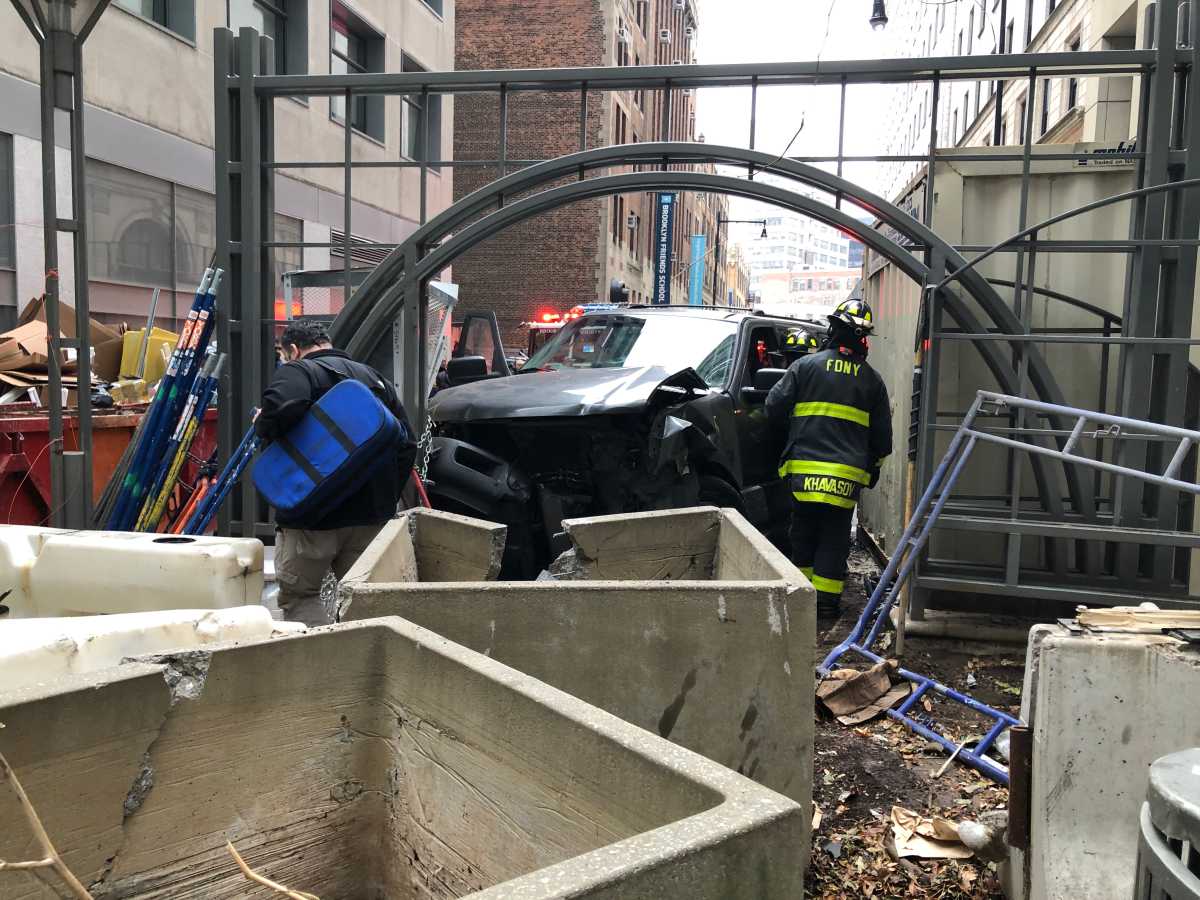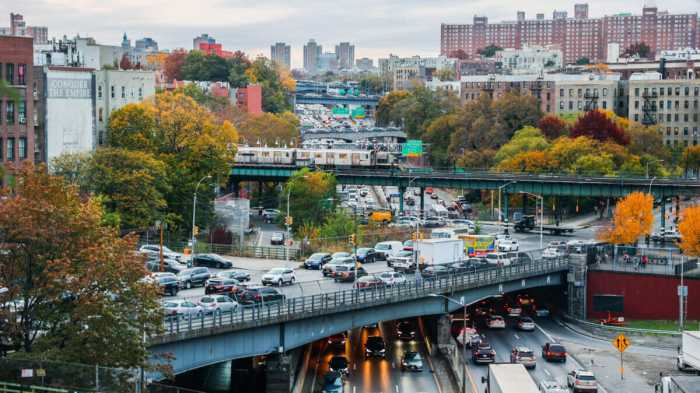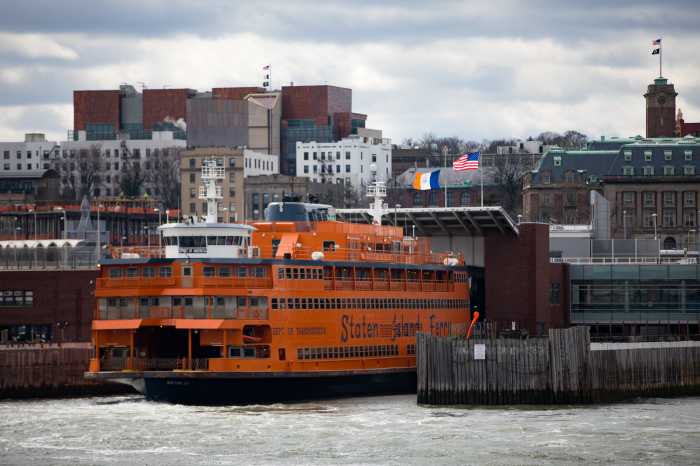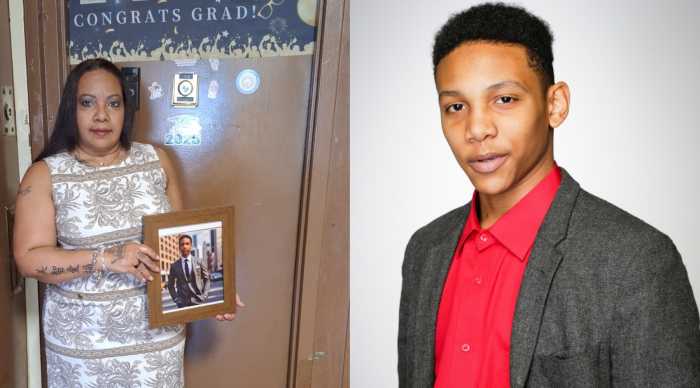Men driving trucks are the focus of the city’s latest traffic safety awareness campaign.
Male drivers caused 78% of all fatal traffic crashes between 2013 and 2017, according to city data. And over the last two years, nearly half of those men—41%—were driving trucks.
“Unfortunately, we are seeing that the popularity of SUVs and these larger…trucks are contributing not only, we think, to the increase in roadway fatalities here in New York City, but it’s clearly been a nationwide trend,” said city Transportation Commissioner Polly Trottenberg at a Washington Heights news conference announcing the campaign.
“A Ford F-250, fully loaded–one of those vehicles can weigh over four tons,” she continued. “The front hood is more than five feet off the ground. I’m 5’2, so basically you could barely see me if I’m standing in front of that truck.”
The $4 million campaign, called “Was it Worth It?,” offers the perspective of a driver involved in a fatal crash, “showing the guilt and remorse and the pain that we know these drivers sometimes feel,” after striking and killing someone, Trottenberg said.
The ads display grieving drivers near crash sites and will be peppered around the city. Twenty-three billboards will be placed in areas with high rates of injuries and deaths for cyclists and pedestrians. They’re also being displayed on the backs of 1,2000 MTA city buses.
While acknowledging that certain jobs could require those trucks in the city, Trottenberg stressed that those drivers need to be especially cautious.
“You have a lot more weight in the vehicle, a higher center of gravity, poorer visibility; it takes you longer to brake…we really need drivers particularly in those kinds of vehicles to be driving very carefully, compensating for the vehicle designs,” Trottenberg said.
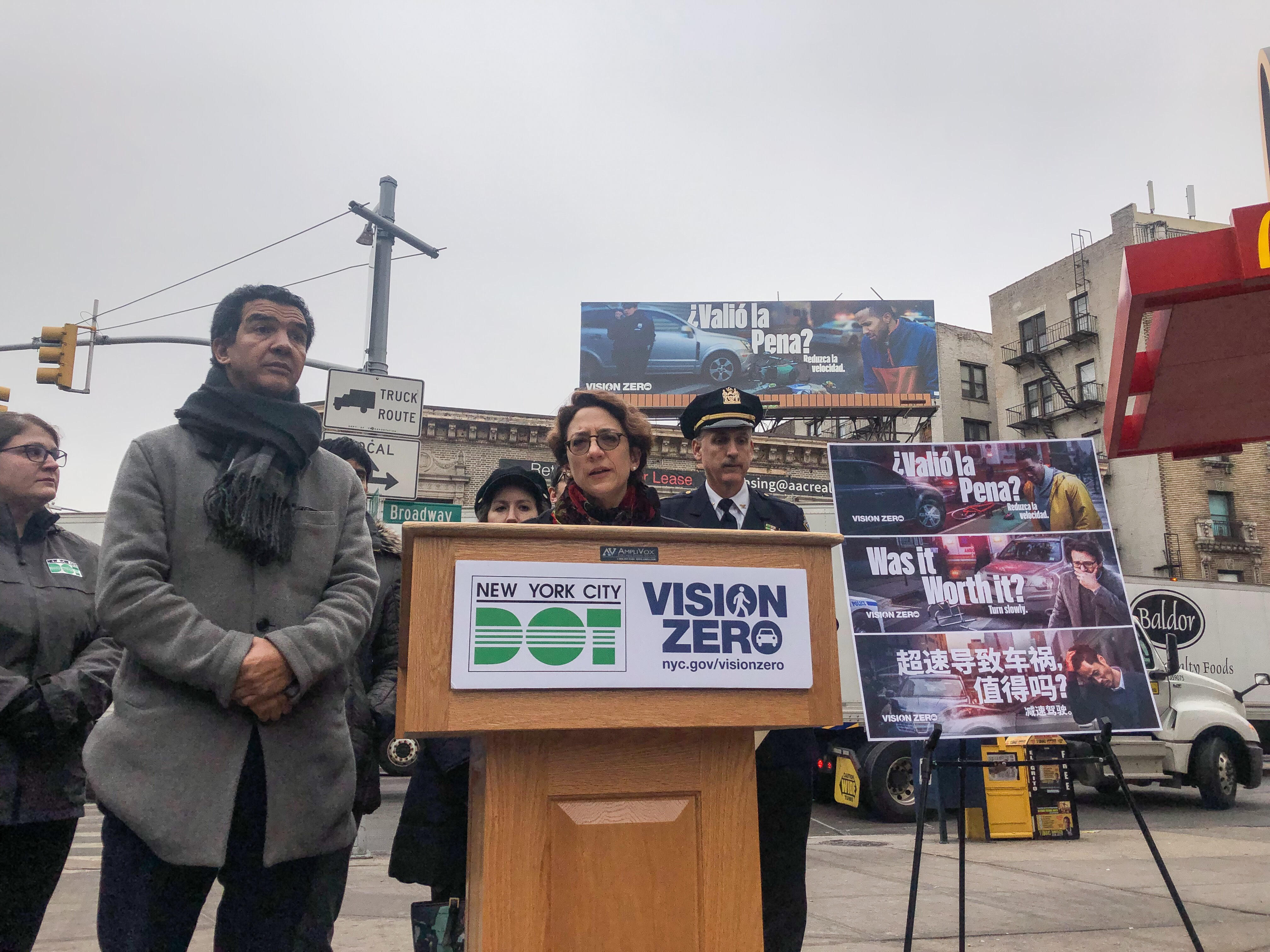
The campaign came just days after the tragic death of three-year-old Bertin DeJesus in Harlem, who was struck and killed in his stroller by a turning pick-up truck driver, and as the city grapples with a particularly deadly year on city streets—the first under Vision Zero where traffic deaths are on the rise.
Advocates hailed the campaign’s focus and messaging but also argued that raising awareness would not be enough to drive deaths down—that the city must do more to redesign streets and better regulate trucks. The twitter account @illegal53NYC posts and retweets images nearly daily of 53-foot tractor-trailers traversing city streets—even though those vehicles are by law banned from its roadways.
“Engineering and design, at the end of the day that’s going to be what determines how you make a street safe,” said Joe Cutrufo, spokesman at Transportation Alternatives, who noted the campaigns are still an “important piece” of the Vision Zero safety campaign.
Trottenberg, when asked about enforcement around trucks, said it’s a “complicated area.” She added the de Blasio administration was working on honing City Council legislation from Brooklyn Councilman Brad Lander, known as the “Reckless Driver Accountability Act,” to help get habitually dangerous drivers off city streets.
“[Enforcement] involves city, it also involves state actors. I also want to emphasize again…I think we do think there is more that can be done at the state levels with DMVs in terms of driver records, etc,” said Trottenberg.
Dennis Fulton, NYPD’s Transportation Bureau inspector, similarly didn’t have many answers on better regulating trucks in the city—only that the department has dedicated units for enforcing size and weight regulations.
“We know that these big trucks have been involved in a disproportionate amount of pedestrian fatalities and we have our units out there doing the best they can,” Fulton said.
Fulton didn’t answer questions on the size of those units or whether they should have bigger staffs, saying, that’s always something that we evaluate.”
The NYPD itself bought nearly 3,000 trucks and pick-ups between the fiscal years 2015 to 2019, according to city data. In the last two fiscal years, it purchased roughly 200 more SUVs than it did sedans, according to data from the Department of Citywide Administrative Services. The fleet purchases include 27 Ford F-250s, the same vehicle Trottenberg highlighted for its dangers.
Cutrufo said, to start, city truck fleets could at least have stickers and other messaging inside their vehicles to take better care on the road.
He also said manufacturers of large SUVs and pick-ups have a responsibility as well.
“The same thing with the debate around guns—should the manufacturers be held accountable for what people are doing with that machinery—it’s a fair question that should be asked about the vehicles themselves,” Cutrufo said. “Especially when you look at the way some vehicles are being marketed.”



